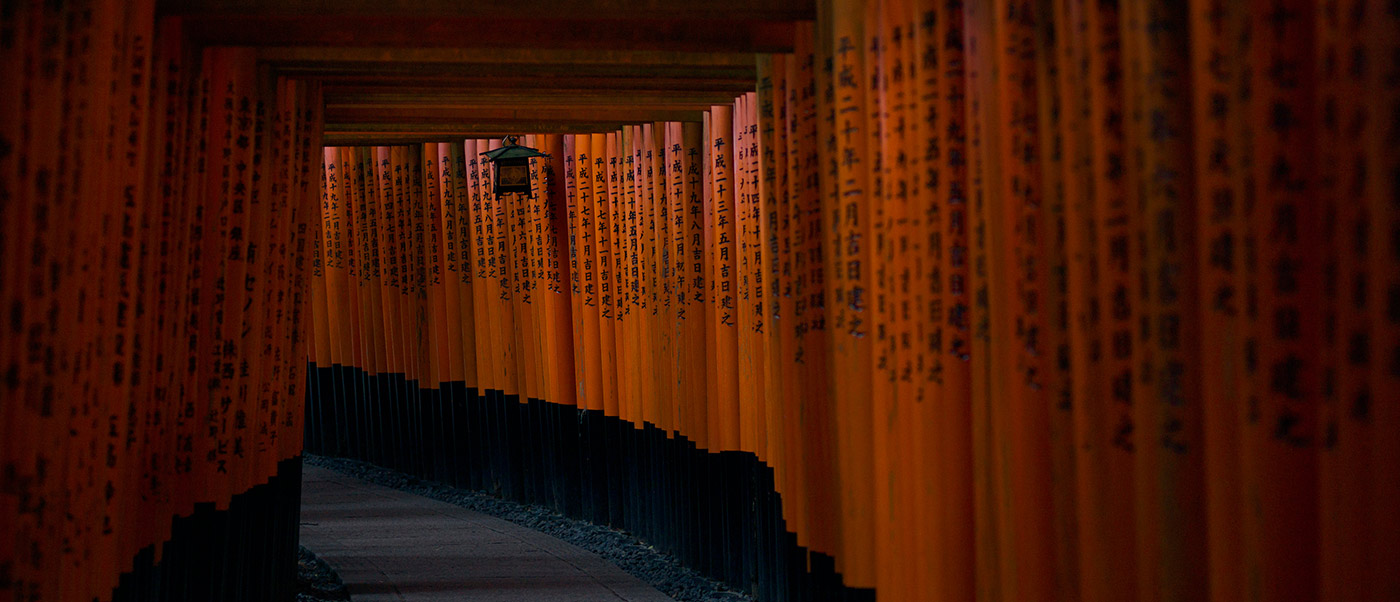Read here about where, when and how I shot the twelve images for this year’s 4K desktop wallpaper calendar. And find a link to our online shop, to go grab your copy.
The New Year almost upon us…..
As we near the end of 2021, it was time to sit down and choose the images for my 2022 4K desktop calendar. As usual, it’s a great opportunity to look back through some of my own recent work, take stock of the last 12months and enjoy the process of procrastination that accompanies boiling down all my faves to just 12!
Let’s dive right in to the images for each month
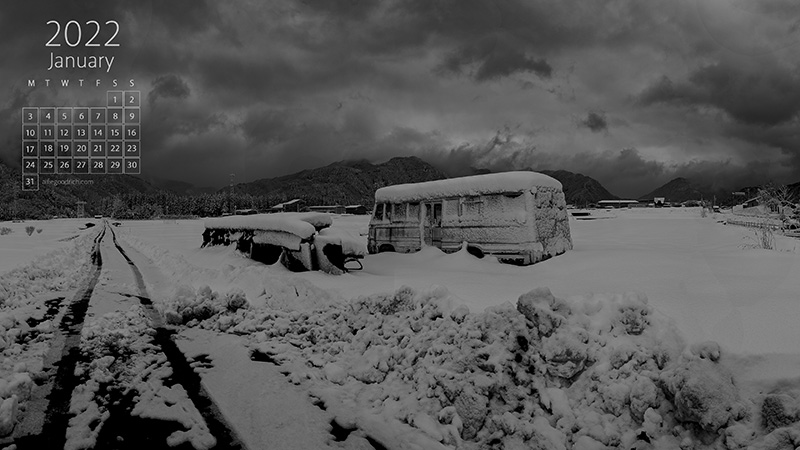
January is cold here in Japan and it can be really, supremely cold the farther north and west you go. This image is actually a fairly old one, shot back in very late December 2013, after I’d returned from an epic round-the-world trip, shooting for Haneda Airport.
We drove to Matsumoto, Nagano, and stayed the night before venturing on the mountain roads over to Toyama and eventually up into the Noto Peninsula. This was shot in a high mountain plateau along the way. We drove around for a little bit, marvelling at the expanse of snow and the ring of mountains n the distance. Then I discovered this old, abandoned bus. The vehicle, the tyre tracks heading off into the distance. It all seemed like the perfect composition, laid right out before me. This shot is part of a very wide panorama that I stitched together from around 6 or 8 vertically shot frames.
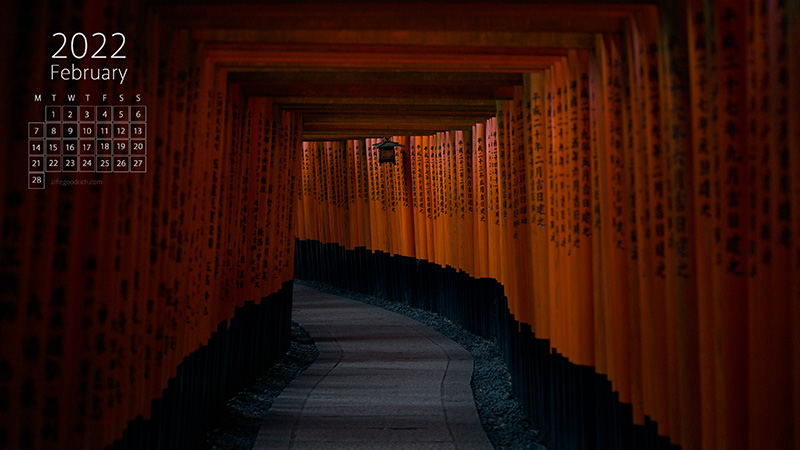
February’s shot comes from Kyoto’s iconic Fushimi Inari Shrine, and a week of events I was shooting for an American client. A few paces behind me when I shot this stood Mariel Hemingway, who was one of the keynote speakers for the event and who. over the course of a couple of days, I had the pleasure of chatting to quite a bit. Lovely lady. I also got to shoot a portrait of her, which she still uses as her Instagram avatar some four years later. It’s always great when anyone I’ve shot a portrait of uses it as their key biography shot. Even more special for me that Mariel still loves the shot.
Fushimi Inari is one of those places that a million people have shot and posted online. It still, though, has its allure for photographers. For me, as was the case this day, it always looks best in the soft light you get on rainy mornings. The side benefit of such weather is that, even pre-Covid, there are far less people around. This was shot on my Hasselblad H4D-40 camera with its 80mm lens. I love the perfect colour rendition from its CCD sensor.
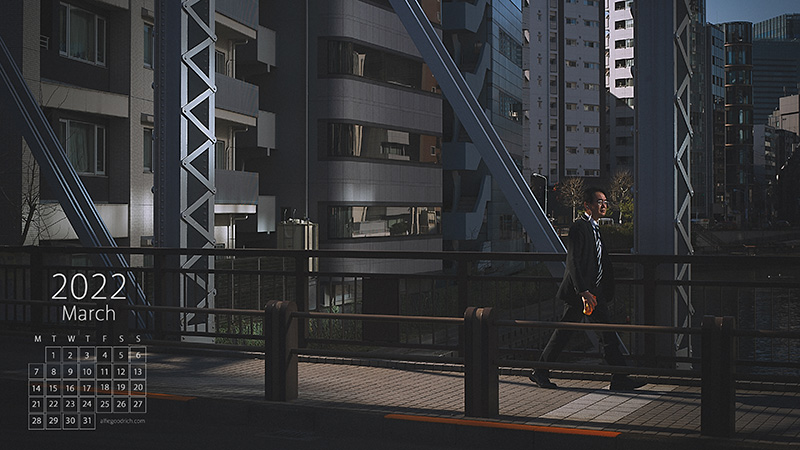
March of 2020 was when the issues with Covid killing off all work really started to kick-in for me. It was also the last time I did a photowalk for someone in town from overseas. A Frenchman working in the automotive business, in Tokyo to have some meetings. It was his last trip pretty much anywhere, too.
We headed over to Tsukishima and a few places at the north end of the island that I know well; some narrow streets, an old shrine and small harbour. Crossing the bridge at the top of the island, we walked over into a little neighbourhood called Shinkawa. The late afternoon light was astonishing. And we concentrated on shooting most of our images in monochrome. This one, too. When I got home, though, and opened the image in Lightroom (which shows me the image in colour, without the Nikon Picture Control I’d used) I realised just how nice the colour version was. If you’re in Chuo-ku, check this bridge out. Especially if you’re there towards the end of the afternoon. The light is divine. It’s called Minamitaka Bridge and you can find it on Google maps, here.
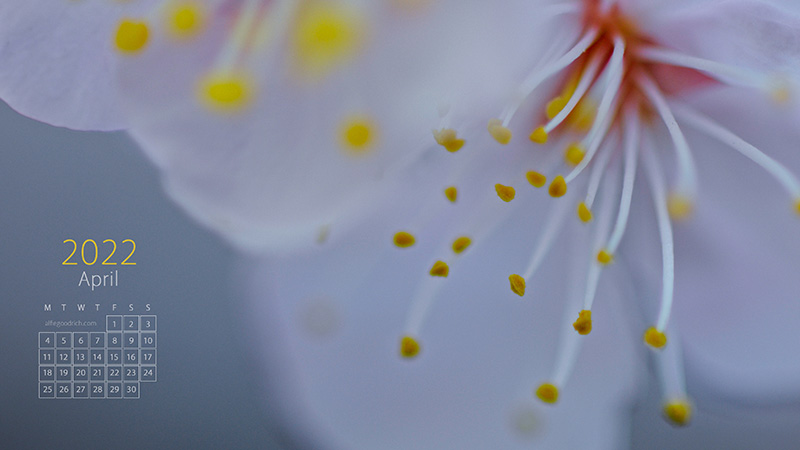
April is all about blossoms here in Japan. And this shot takes me back about 10years, to a day I spent wandering around our neighbourhood in Tokyo with a load of extension-tubes stacked onto my Nikon. Extension tubes are a great, cheap way of turning any lens into a macro. They’re basically just metal tubes that extend the lens away from the image capture plane. So, you can use them with any lens as long as you don’t use more millimetres of extension than the length of the lens.
This shot was made with an 85mm f/1.4 lens on the Nikon D300 I was shooting at the time. So, already the DX crop factor means the lens is seeing at an equivalent of around 130mm. With 72mm of extension tubes, the magnification is almost beyond 1:1. Some stunning effects can be had.
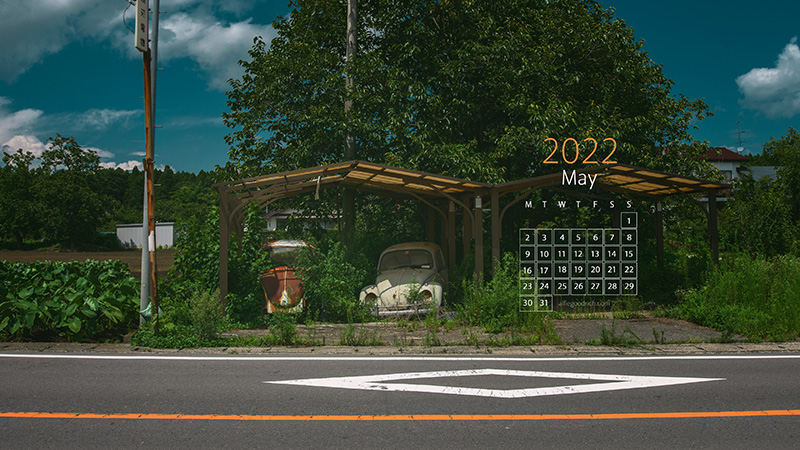
May is often when the weather in Japan begins to get brutally hot. And the light sharp, hard and unrelenting. This shot takes us back to 2015 and the hard light of a day when you could feel the summer was on its march. This is in Fukushima, a few miles north east of Yabuki and a just 10mins drive from where my mother-in-law lives, in Ishikawa-machi. These two forlorn VW Beetles have been there as long as I can remember the village. Each year they disappear a little more. In fact, a few months ago we were in the area to see mum and drove past here again. Now only one car remains; the one on the left. The awnings have gone and very little of this scene is there at all, in fact. It’s a shame to see things disappear. But it’s times like that when I feel so blessed to be a photographer. Time can forever be paused, frozen, when you have a camera.
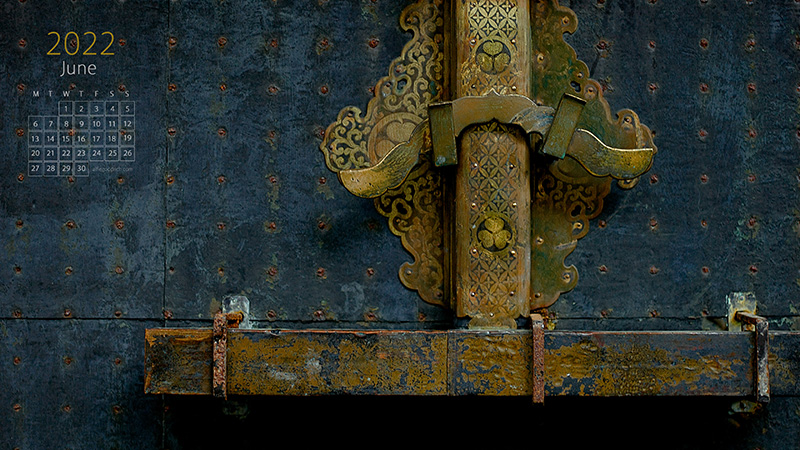
For June, we come south of Fukushima to neighbouring Tochigi and the details of a door inside the precincts of Toshogu Shrine. Throughout an average year, I’ll try to get up to Nikko at least once or twice, to visit the shrines and trapse around the nearby countryside. In 2015, we were there in the snow. 2017 saw me there to shoot a whole series of works throughout the town and various of the shrines for Expedia.
The details are often what I really love to spend time shooting. Gates, doors, carvings, stone, moss. Once you’ve shot the wider scenes – what I’d call ‘the whole story – details are really what brings granularity to a set of photos, to a narrative. The texture, the colours. The passing of time can be felt in the detail of this door. It’s also, on a simple aesthetic level, a thing of beauty. And I love beauty.
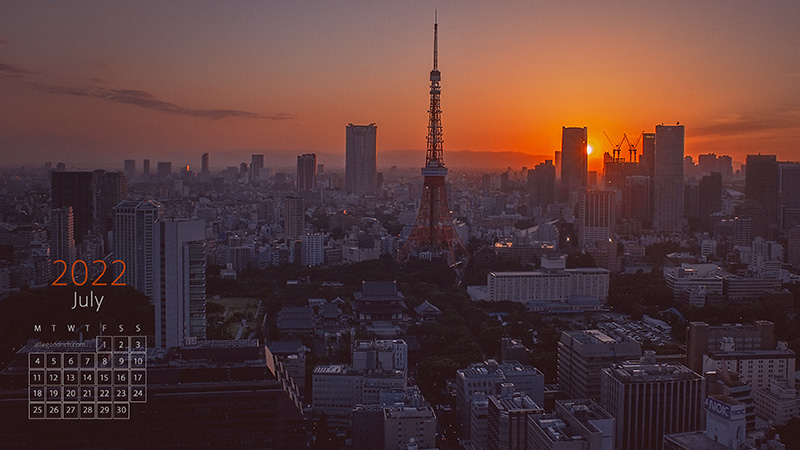
July is when I begin to retreat indoors as much as possible. To dodge the sun, walk in the shadows, seek out the air-conditioned sanctuary of buildings, stores and public transport. But, I do still like to see the sun. As long as I’m behind a pane of glass and bathed in cool air. As each day draws to a close, the disappearance of the sun gives a little respite and sunsets take on new meaning.
This particular sunset spot used to be a favourite. But, like many a vantage point in Tokyo, it’s been encroached on by a new building. The view has gone and, now, so has the building itself. This was July of 2016 and my view from the west-facing windows on the top floor of the World Trade Centre building in Hamamatsucho, Tokyo. The new building across the road has, I think, a view deck of its own although I haven’t been there yet to take a look. The view is something special from this part of town. The Tokyo Tower front and centre, the high-rises of Shinjuku in the background. A wonderful canvas when the sun puts on a show as good as this.
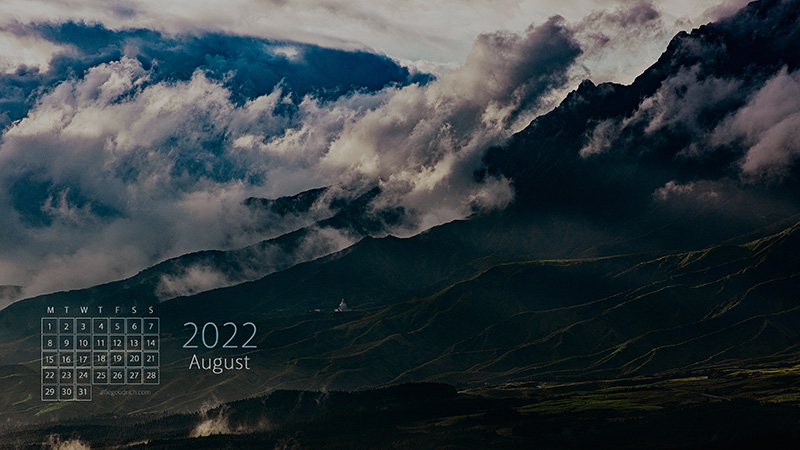
August‘s photo takes us all the way down the south of Japan to Kumamoto. In 2016, I was in the area the day after the big quake there, helping a friend drive his truck from Tokyo to deliver food and provisions to quake victims. The following year I was there again, shooting for the Japan National Parks and the JTB. The area is fascinating. Being there to shoot its beauty was obviously very different to being there in the immediate aftermath of a major national disaster. But such varying experience broadens the mind, deepens one’s appreciation for the delicate balance of people, landscape and nature.
The area around Mt. Aso is indeed a fascinating and unique natural cornucopia, dominated by the caldera. This was shot from the rim of that caldera, early in the morning after shooting a local yoga teacher who does morning sessions high up on the caldera’s rim. The clouds, the light, the grandeur of it all. Very inspiring.
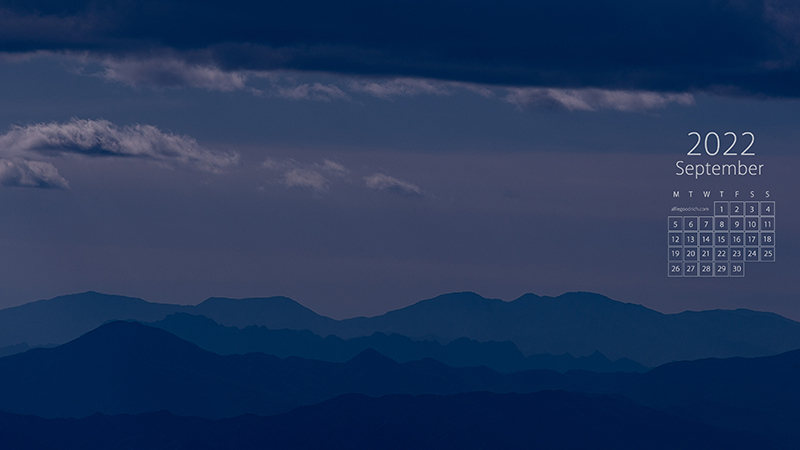
Back up the Japanese archipelago to Gunma for September’s image. And a shot of the distant mountains from up on the lower slopes of Mount Akagi. This area, just a couple of hour’s drive from Tokyo, is one I return to in as many seasons as possible. Each brings new opportunity. Different light. New focus. In winter the area is a carpet of snow. The lake at the top of this road totally frozen over, a mecca for those who travel to fish through the ice. In autumn, a nature park delivers a spectrum of colour. All across the slopes there are views of the mountain ranges opposite.
There are many places in Japan where you can find a vantage point to appreciate the gradation of colour and light across the mountains. This is one of my favourites.
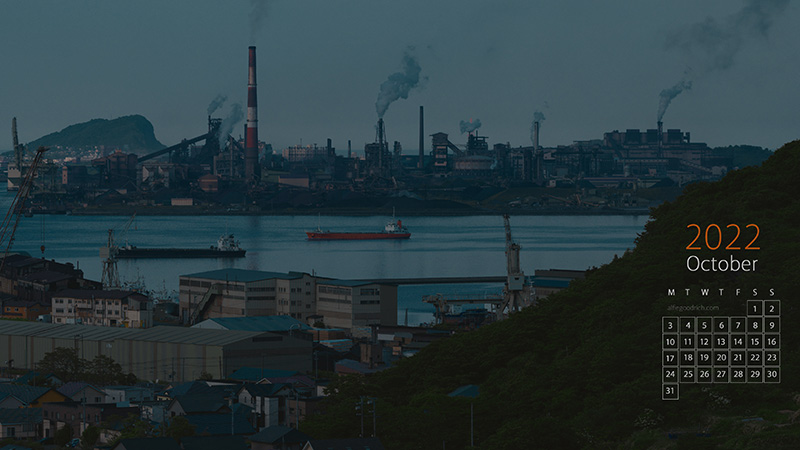
October’s photo is, I’ll admit, one I shot in a July. But I wanted to showcase a city in Hokkaido that I visit in July of 2020, for NHK World, because it has such a unique character. Muroran was once Japan’s premier steeltown. Over the years its importance and bustle has waned. This passage of time and waning of influence was the very fact that took me there, to meet locals, film the area and examine what the future holds for the town that built all the dreadnoughts for Japan’s navy ahead of the Russo-Japanese War. A town that constructed the guns for the mighty battleship Yamato. A town whose steel industry has a distinctive resonance for me, a Brit, as it was the UK’s Armstrong-Whitworth company that helped established the steel business there in the first place.
Muroran is a wonderful mix of industry and spectacular scenery. Of industrial decay and human resilience. I encourage you to visit it some day.
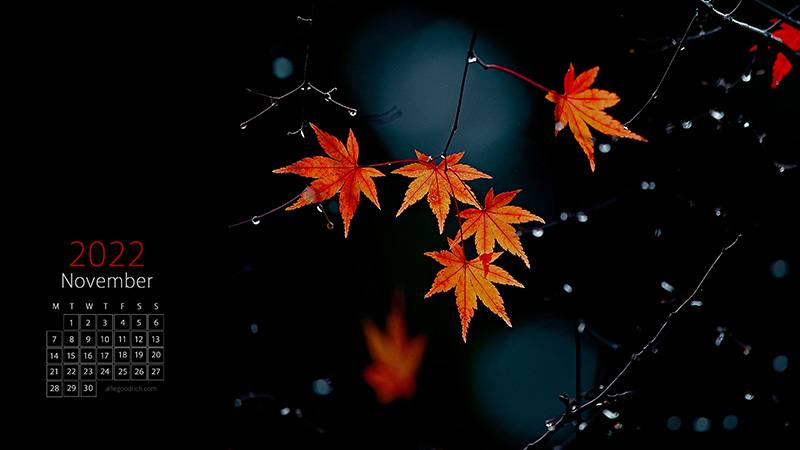
The Japanese autumn is one of my favourite times. Not only are the natural sights a wonder to behold, but the country at this time of year is more suited to my European, maritime sensibilities. Gone is the heat of summer, ever present are the panoply of oranges, yellows and reds that signal the slow descent towards winter.
This shot, made in November of 2020 in Fukushima, typifies the glory of autumn for me: the reds of a maple tree, the silvery globules of a fresh November downpour. We were visiting mum. It was a quiet and lazy Sunday morning and the rain was pattering down onto the roof of her house. I slipped out quietly to take a short drive to a nearby forest park near Fukushima Airport, to see what there was on offer. Over the course of an hour I wandered the edge of the treeline, using the 300mm telephoto on my Nikon to zero in on the jewels of rain clinging to the trees. A morning very well spent!
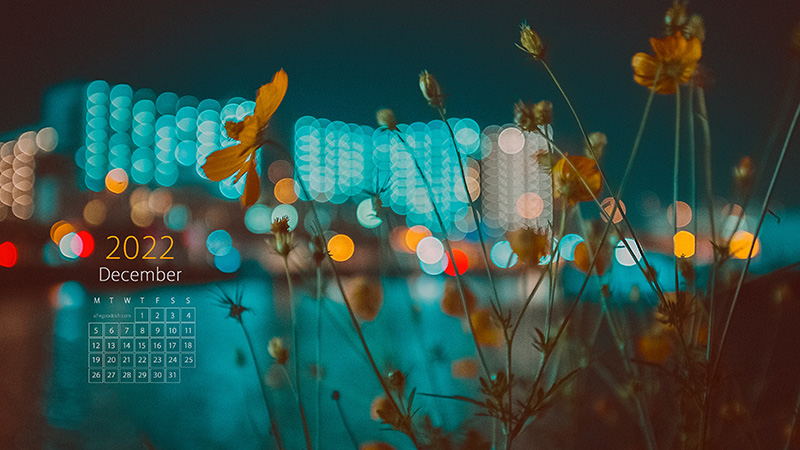
December’s shot brings us all the way back to my home neighbourhood, Shinagawa-ku in Tokyo. Each winter is different in terms of just how much of a display the cosmos flowers along the canal put on for us. But, additional to any colour provided by nature, the fall of night and the presence of a huge block of flats across the water always ensure that there’s a kaleidoscope for the enquiring photographer.
We round off this calendar with a shot taken in my favourite local escape. This place is my outdoor man-cave. A place to sit, watch, relax and escape the vagaries of the bustling city. And, as with this shot, I’m often down there with just one lens. My oldest. The Nikkor 50mm f/1.2 Ai that has been with me since I was 10 years old. No better glass for soaking up a night on the canal.
Download my 2022 4K desktop wallpaper calendar here….
The calendar is available in both English and Japanese from my Ko-Fi store. You’ll get 12 4K wallpapers, one for each month, which you can easily set as your desktop wallpaper whether you’re on Mac or PC.
I hope you have as much fun seeing the pictures throughout the course of the year as I have capturing them!

